|
|
||
|
20 March 2024 |
||
|
1. Examination of IPCC Climate Action Strategies
2. Analysis of Gender Pay Disparity
3. Advancements in India’s Nuclear Deterrence through MIRV Technology
4. Collaborative Efforts in Hydrogen and Fuel Cell Technologies with IPHE
5. Findings from the World Air Quality Report for 2023

- Examination of IPCC Climate Action Strategies
Understanding the IPCC
- The Intergovernmental Panel on Climate Change (IPCC) serves as the premier international body for assessing climate change science since its establishment in 1988 by the World Meteorological Organization (WMO) and the United Nations Environment Programme (UNEP).
- Tasked with providing policymakers with periodic assessments on climate change science, its impacts, risks, and potential adaptation and mitigation strategies, the IPCC conducts comprehensive reviews of published literature to compile Assessment Reports.
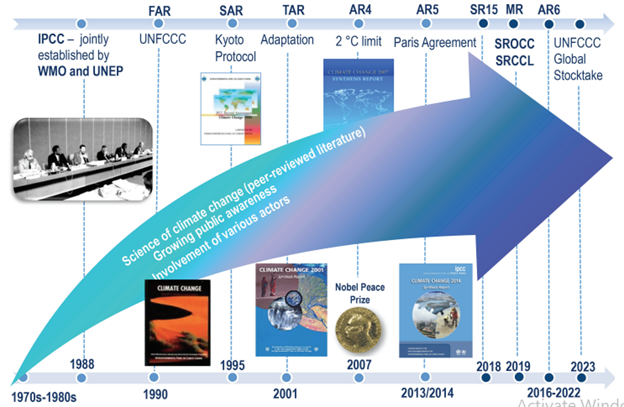
The Role of IPCC Assessment Reports
- Published approximately every seven years, the IPCC Assessment Reports represent the most exhaustive scientific evaluations of Earth’s climate.
- These reports, crafted by three working groups, cover various facets of climate science, impacts, vulnerabilities, adaptation, and mitigation strategies.
Insights from the IPCC’s AR6 Report
- An analysis of 556 prospective emissions scenarios from the IPCC’s Sixth Assessment Report (AR6) reveals troubling projections.
- By 2050, regions containing 60% of the global population, particularly Sub-Saharan Africa and parts of Asia, are expected to maintain below-average per-capita GDP levels.
- Persistent disparities in consumption patterns between the affluent Global North and the developing Global South, alongside projections of disproportionate burdens on developing nations in terms of carbon sequestration and adoption of Carbon Capture and Storage (CCS) technologies, underscore significant inequities in projected climate action pathways.
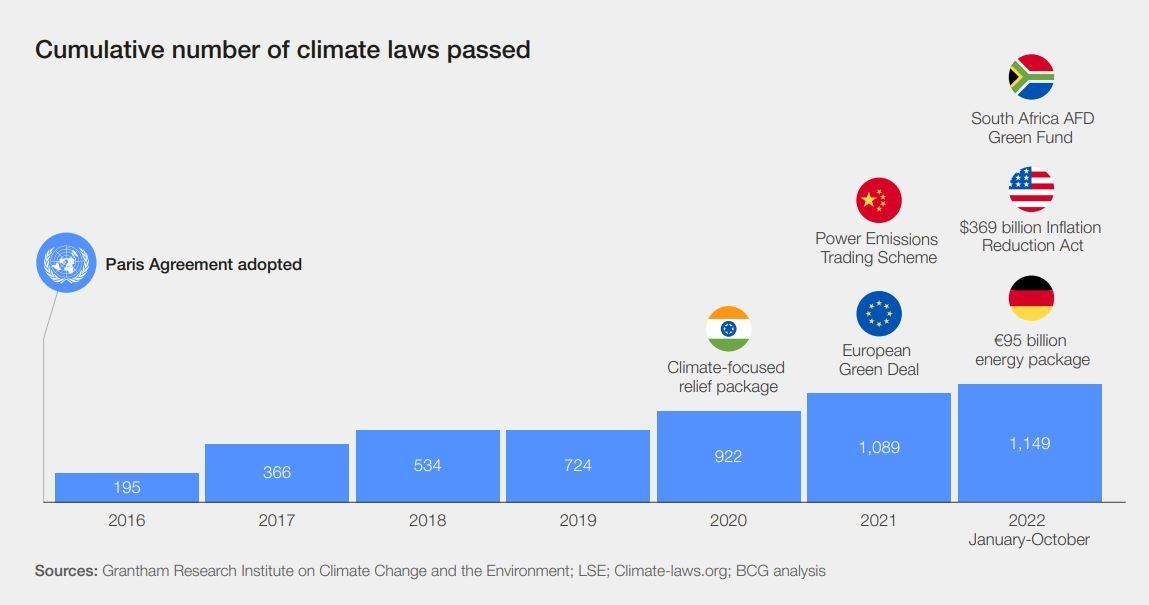
Critique and Call for Equity
- Criticism is directed towards scenarios for overlooking historical responsibility and failing to address the energy needs of developing nations in achieving their development goals, thus highlighting disparities in projected climate action pathways.
- This necessitates an equitable approach to climate change mitigation efforts.
Importance of Equity in Climate Action
- Equity emerges as a pivotal consideration in addressing climate change. Recognizing historical emissions from wealthier nations in the Global North is essential for fair treatment in mitigation efforts.
- Developing countries, facing heightened vulnerability to climate impacts despite minimal responsibility for emissions, must receive priority in equitable climate action.
- This involves providing equitable access to climate funding, technology transfer, and capacity-building support to bridge resource, technological, and infrastructural gaps.
Addressing Social Injustices and Fostering Global Cooperation
- Climate policies and measures should also address social injustices exacerbated by climate change, lifting vulnerable communities and rectifying existing disparities.
- Principles such as common but differentiated responsibilities promote global cooperation and collaboration among nations to collectively pursue shared climate objectives.
- Ensuring equity in climate action not only fosters trust but also facilitates meaningful collaboration, driving progress in addressing the climate crisis.
2. Analysis of Gender Pay Disparity
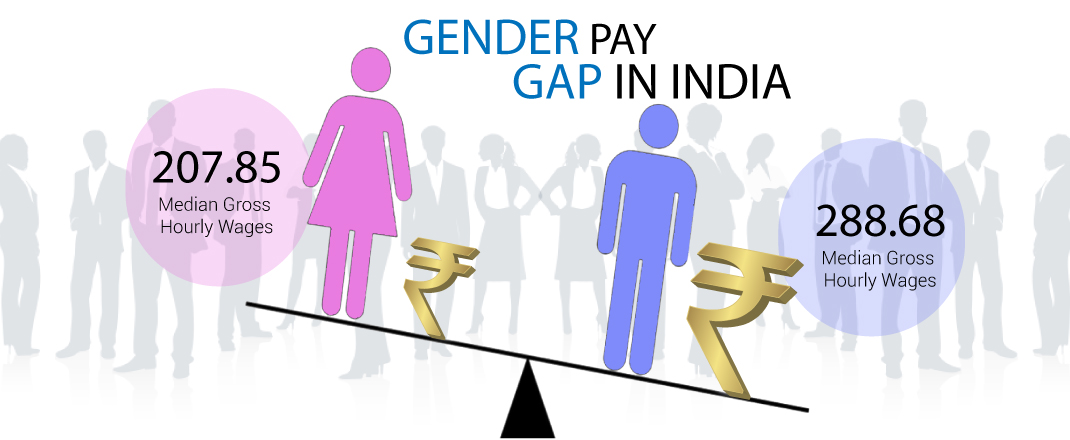
Overview:
The World Bank Group’s latest report, “Women, Business, and Law 2024,” sheds light on the global gender pay gap, revealing that women earn approximately 77 cents for every dollar earned by men.
Calculation Method:
- The gender pay gap is calculated based on the average wage disparity between all working women and men, rather than comparing individuals in similar roles.
- This differs from “equal pay for equal work,” which advocates for equal compensation when qualifications and job responsibilities are identical.
Variations in Calculation:
Different studies employ various methodologies, such as hourly or weekly wages, leading to slight variations in reported figures regarding the gender pay gap.
Factors Contributing to the Gap:
- Labor Force Participation: Societal gender roles contribute to women’s lower participation rate in paid jobs.
- Occupational Segregation: Women are often concentrated in lower-paying industries and roles.
- Managerial Positions: Fewer women hold leadership positions, impacting the overall average salary.
- Industry Disparities: Industries dominated by men tend to offer higher remuneration.
- Part-Time Employment: Women’s engagement in part-time work exacerbates the gap due to lack of proportional benefits.
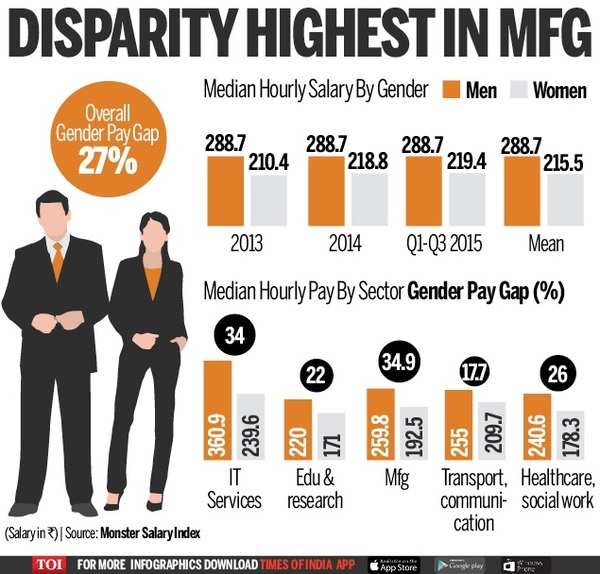
Socio-Economic Influences:
- Cultural Beliefs: Historical underinvestment in women’s education and cultural beliefs regarding men as primary breadwinners contribute to the gap.
- Safety Concerns: Safety concerns in commuting and workplace environments influence women’s career choices.
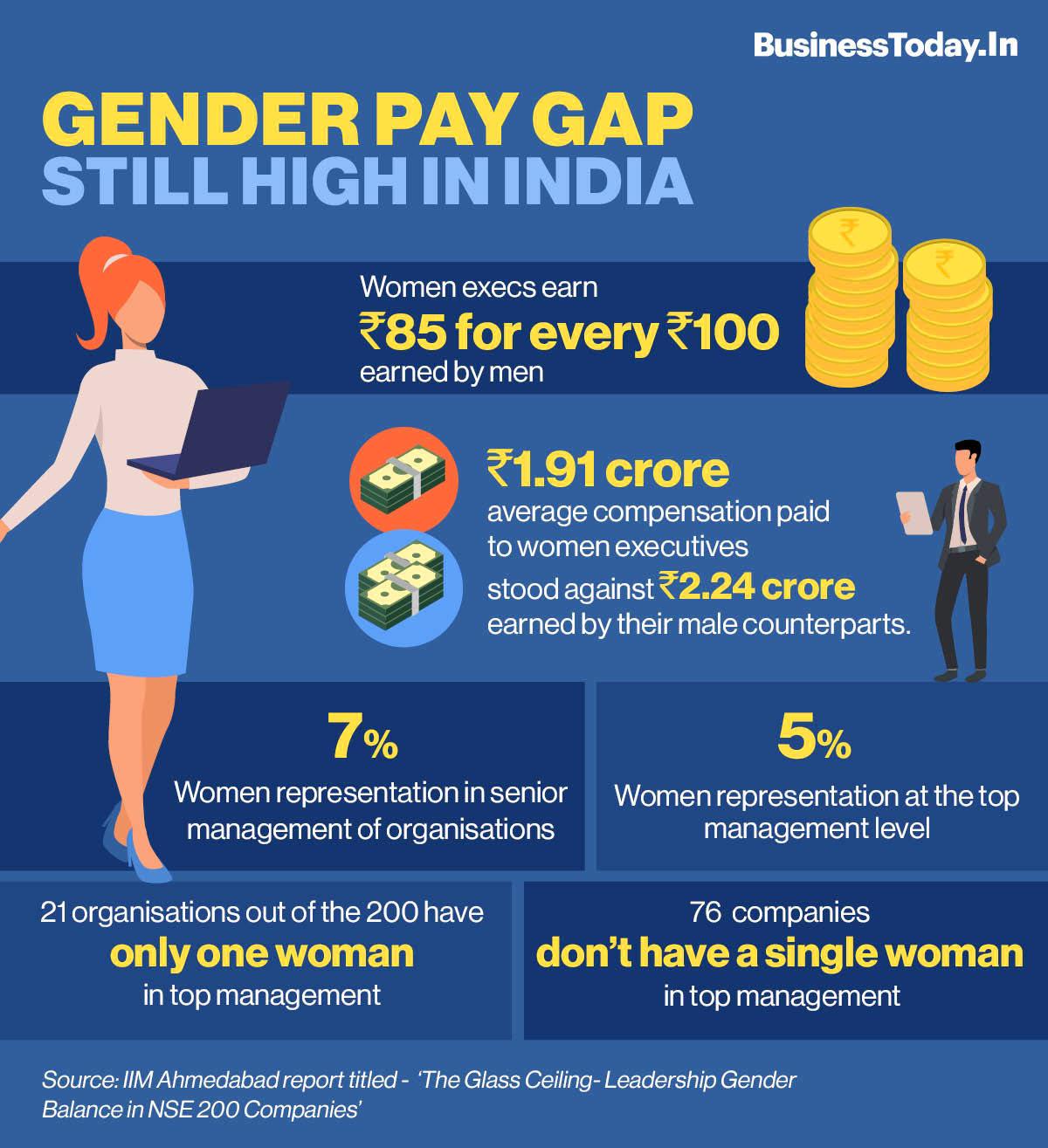
Insights from Employment Data:
- Patterns emerge in earnings concerning age and career breaks, particularly for women in their mid-30s and 40s.
- The “motherhood penalty” highlights how career interruptions for child-rearing disproportionately affect women’s earnings potential.
Expert Insights:
- Economist Claudia Goldin emphasizes the trade-offs between family and career advancement, noting the structural challenges that perpetuate the gap.
- Policy interventions such as maternity and paternity leave and flexible work arrangements can influence the pace of gap closure.
Long-term Outlook:
- Closing the gender pay gap is a gradual process influenced by evolving societal norms and policy interventions.
- Despite progress, substantial disparities persist, necessitating ongoing efforts to achieve pay equality.
3. Advancements in India’s Nuclear Deterrence through MIRV Technology
Introduction:
The recent test of the Agni-5 ballistic missile, codenamed “Divyastra,” conducted by India’s Defence Research and Development Organisation (DRDO), holds strategic importance.
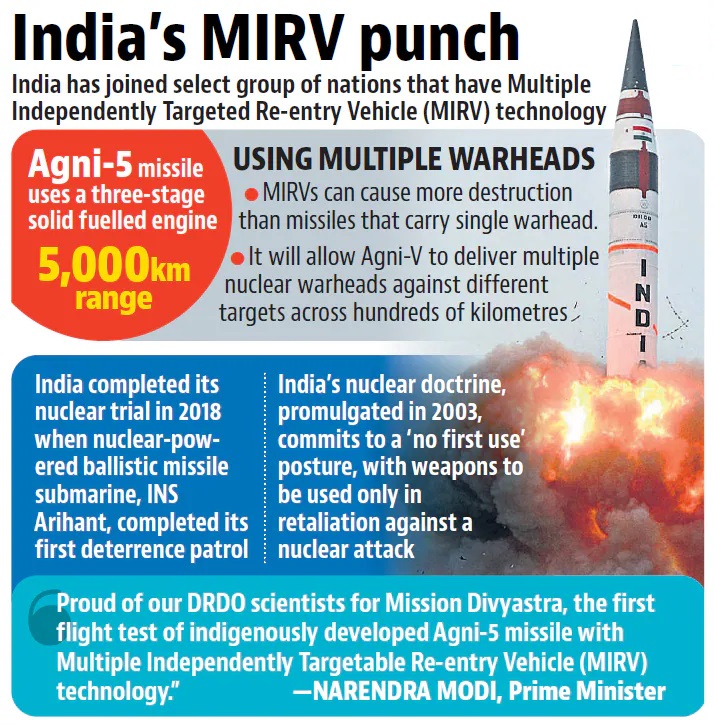
Context:
With a range exceeding 5,000 kilometers, the Agni-5 represents India’s longest-range missile to date. Its significance lies not only in its range but also in its potency, particularly due to its integration with Multiple Independently Targetable Re-entry Vehicles (MIRVs).
Understanding MIRVs:
- MIRVs, or Multiple Independently Targetable Re-entry Vehicles, are advanced missile systems capable of delivering multiple warheads to different targets with a single missile.
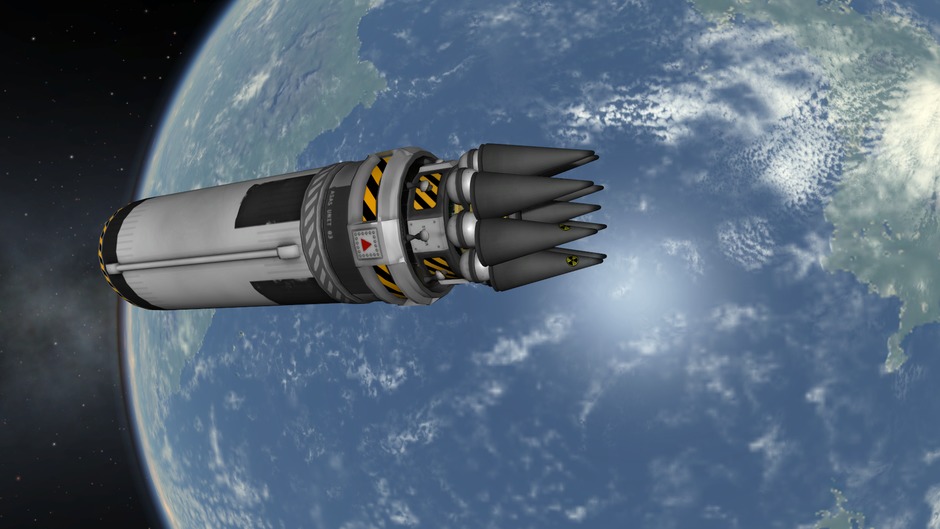

Historical Background:
- The development of MIRV technology traces back to the 1970s, pioneered by nations like the United States, the Soviet Union, and later adopted by China, France, and the United Kingdom.
Lethality of MIRVs:
- MIRV-equipped missiles possess lethal capabilities by releasing multiple warheads at varying speeds and trajectories, unlike conventional single-warhead missiles.
Comparative Analysis with China:
- India’s development of MIRV-capable ballistic missiles marks its entry into a select group of nations possessing such technology.
- The potency of MIRVs is particularly crucial in countering emerging threats, including China’s ballistic missile defenses.
Challenges and Complications:
- Various technical challenges hinder the development of MIRV-capable ballistic missiles, including nuclear warhead miniaturization, receptacle weight reduction, precision configuration, guidance and accuracy, geographic limitations, integration challenges, and decoys and countermeasures.
Future Prospects for Indian Projects:
India’s strategic focus includes testing long-range Submarine-Launched Ballistic Missiles (SLBMs) to enhance its nuclear deterrence capabilities. Collaboration between DRDO and AEC continues to drive advancements in missile and nuclear technologies.
Conclusion:
India’s advancements in MIRV technology, along with continued testing and development efforts, reinforce its nuclear deterrence posture, particularly in the face of evolving threats, notably from China.
4. Collaborative Efforts in Hydrogen and Fuel Cell Technologies with IPHE
Purpose and Background
- Established in 2003, IPHE is an international inter-governmental partnership spearheaded by the US.
- Its primary objective is to expedite advancements in hydrogen and fuel cell technologies.
Membership
- Comprising 21 member countries and the European Commission as a non-voting participant, IPHE includes major global economies such as the United States, Japan, Germany, China, South Korea, Canada, and India.
- While the United Kingdom, Russia, and Singapore have been mentioned in various contexts, they are not explicitly listed as members.
41st Steering Committee Meeting
- The 41st Steering Committee Meeting of IPHE is currently underway in New Delhi, serving as a pivotal platform for fostering international collaboration and coordination among member nations, stakeholders, and decision-makers.
Objectives
- Facilitating Transition: IPHE endeavors to expedite the transition to clean and efficient energy and mobility systems utilizing hydrogen and fuel cell technologies across diverse applications and sectors.
- Information Sharing: The partnership serves as a conduit for exchanging information on member country initiatives, policies, technology status, safety measures, regulations, standards, and outreach endeavors.
- Advancement of Hydrogen Technologies: IPHE champions a sustainable future by showcasing hydrogen’s versatility in various industries and its pivotal role in decarbonizing energy systems.
Key Initiative: H2-DEIA Platform
- In collaboration with the Hydrogen Council, IPHE launched the H2-DEIA platform in 2023.
- This initiative is dedicated to promoting diversity, equity, inclusion, and accessibility within the hydrogen and fuel cell economy.
- It seeks to cultivate a diverse workforce, share best practices, and bolster workforce development within the hydrogen sector.
FUEL CELLS
Introduction
Fuel cells are electrochemical devices that convert chemical energy from a fuel source (like hydrogen) into electricity through a continuous chemical reaction.
Unlike batteries, they don’t need recharging as long as fuel is supplied.
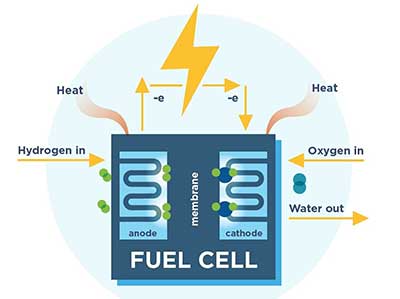
Working Principle
A fuel cell has three main components:
- Anode: The negative electrode where the fuel undergoes an oxidation reaction, releasing electrons and ions (often protons).
- Cathode: The positive electrode where an oxidizing agent (usually oxygen) undergoes a reduction reaction, combining with the ions from the anode.
- Electrolyte: A medium that allows the ions to flow between the anode and cathode but not the electrons. This separation forces the electrons to travel through an external circuit, creating electricity.
Key Points
- Fuel Types: Hydrogen is the most common fuel, but others like methanol and natural gas are also being explored.
- Byproducts: Ideally, the only byproduct is water vapor (when using hydrogen). This makes them a clean energy source.
- Efficiency: Fuel cells can be highly efficient in converting chemical energy to electricity, reaching up to 60% efficiency.
Types of Fuel Cells
- Polymer Electrolyte Membrane (PEM) Fuel Cells: Most common type, used in cars and portable applications. Operate at lower temperatures but require pure hydrogen fuel.
- Solid Oxide Fuel Cells (SOFCs): Operate at high temperatures, enabling efficient internal reforming of fuels like natural gas. Used for stationary power generation.
- Phosphoric Acid Fuel Cells (PAFCs): Mature technology, used for stationary power generation with good efficiency but require high operating temperatures.
Applications
- Transportation: Powering electric vehicles (cars, buses, trains) with lower emissions compared to gasoline-powered vehicles.
- Stationary Power: Providing clean and efficient electricity for homes, buildings, and remote locations.
- Portable Power: Supplying electricity for laptops, phones, and other electronic devices.
Advantages
- Clean: Produce minimal emissions, especially when using hydrogen fuel.
- Efficient: Convert a high percentage of chemical energy into electricity.
- Scalable: Can be designed for small or large-scale power generation.
- Quiet: Operate silently compared to combustion engines.
Challenges
- Cost: Manufacturing and infrastructure costs are still high.
- Hydrogen Storage: Storing hydrogen fuel can be complex and require specialized infrastructure.
- Durability: Long-term durability and degradation of components need further improvement.
5. Findings from the World Air Quality Report for 2023
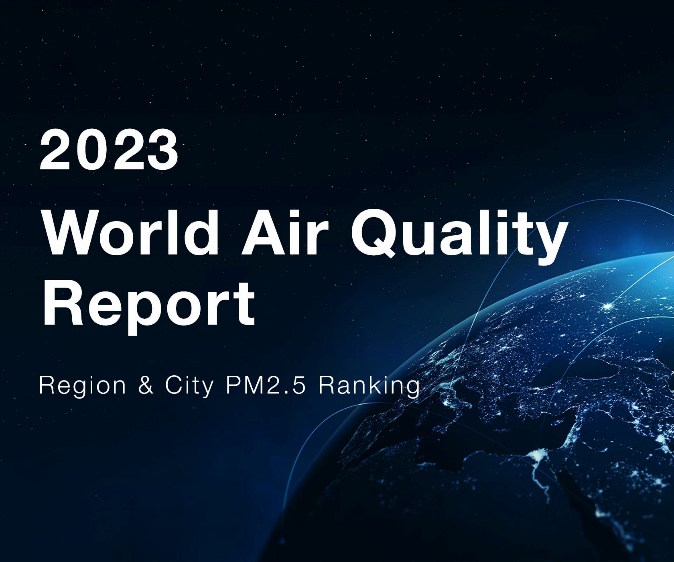
Delhi’s PM 2.5 Levels Exceed WHO Guidelines
- In 2023, Delhi was ranked as the most polluted capital globally, with PM 2.5 levels surpassing WHO guidelines.
- The average annual PM 2.5 concentration in Delhi was recorded at 92.7 µg/m³, far exceeding the recommended limit of 5 µg/m³.
- Following Delhi, Dhaka in Bangladesh reported a PM 2.5 level of 80.2 µg/m³, indicating widespread air pollution in urban centers.
Most Polluted Cities in India and Globally
- Bhiwadi in Rajasthan ranked as the most polluted city in India and the third most polluted globally, with PM levels reaching 92.7 µg/m³.
- Delhi emerged as the most polluted metropolitan city, with PM levels at 92.6 µg/m³, ranking fourth globally among 50 evaluated cities.
Other Cities Facing High Pollution Levels
- Several cities including Patna, Muzaffarnagar, Darbhanga, Noida, Gurgaon, Bulandshahr, Meerut, Charkhi Dadri, Jind, Ghaziabad, Faridabad, Dadri, Hisar, and Greater Noida were among the most polluted.
Changes in Pollution Levels in Delhi’s Neighboring Towns
- Gurugram, Noida, Ghaziabad, and Faridabad experienced a slight decline in pollution levels ranging from 34% in Gurugram to 21% in Faridabad compared to previous years’ average PM 2.5 levels.
India’s Global Air Quality Ranking
- India ranked eighth among 131 countries with a population-weighted average PM2.5 level of 53.3 µg/m³ in 2022.
- This placed India behind countries like Chad, Iraq, Pakistan, Bahrain, Bangladesh, Burkina Faso, and Kuwait in terms of air pollution levels.
- India’s annual average PM2.5 level slightly decreased from 58.1 µg/m³ in 2021 to 53.3 µg/m³ in 2022.
Worsening Trends in Delhi’s Air Quality
- Delhi witnessed a 10% increase in average annual PM 2.5 concentration from 2022 to 2023.
- November 2023 recorded the highest pollution level at 255.1 µg/m³, highlighting seasonal variations and peak pollution periods.
Regional Disparities and Challenges
- Cities like Begusarai and Guwahati surpassed Delhi in PM 2.5 levels, indicating the broader challenge of air pollution across various regions.
National and Global Rankings for PM 2.5 Levels
- India ranked third globally for PM 2.5 levels with an average annual concentration of 54.4 µg/m³, trailing behind Bangladesh and Pakistan.
- The report highlighted the widespread impact of air pollution in India, with many experiencing PM 2.5 levels well above WHO guidelines.
Health Implications of PM 2.5 Exposure
- Exposure to PM 2.5 particles is directly linked to various health issues including cardiovascular and neurological diseases, as well as increased mortality rates.
- The alarming statistics emphasize the urgent need for mitigation measures to address the adverse health effects of air pollution.



